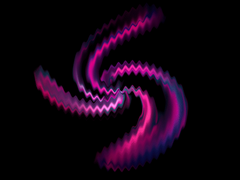Saturday, February 23, 2008
Monday, February 11, 2008
Tuesday, June 26, 2007
Is painting dead? #2

In the past two decades, most "advanced" commercial galleries and museums have focused on everything but painting. These bastions to art were over-flowing with installations, photo-based work, conceptual art, new media, digital and video art. But all has changed; exhibitions, art theory, and the art-market have witnessed in the past few years a resurgence of painting.
As is the nature , from time to time in the art world, activities such as painting have been poorly valued in relation to other visual arts disciplines. The demise of painting claim has been postulated at regular intervals since the middle of the 19th century when, in response to the rise of photography, the art critic Paul Delaroche declared, "from today painting is dead". Within a broader context G.W.F. Hegel asserted "art is, and remains for us, on the side of its highest destiny, a thing of the past", for Malevitch it was specifically tied to the destruction of the subject, whilst Rodchenko, referring to his three monochrome canvases of 192 concurred, "this is the end of painting, "These are the primary colours. Every plane is a discrete plane and there will be no more representation". and for Duchamp, it was about overcoming "the retinal". In more recent times (since the 1970s) this notion that "painting is dead" has become an insistent refrain from some artists, academics and critics; however, this notion does not amount to the extent that others imagine. The implicit assumption that painting has died is a fallacy. Throughout these debates (and despite the ascendancy of installation art, performance, photography, video and computer technology) painters continued to paint and paintings never vanished.
A plethora of "isms" abounded during the 1960's, and into the 1970's in the USA, and within European counterparts. These decades presaged a fundamental change in thinking about art. Major shifts occurred, not only in artistic spheres, but also in the cultural sphere of intellectual theory.. the time was ripe, and Marcel Duchamp's subversive ideas found a willing audience. The anxieties of the time (1960's and 1970's) condensed most specifically around what it meant to be a painter, and the dubious spectre that anyone could be an artist and anything could be art. Not surprisingly, the traditional notion of applying pigment to a surface, and art in general, as a specialist craft broke down.
In course of any art movement, the passage of time and its very success renders the radical insight routine, as formally exciting discoveries became natural and familiar features of the landscape. Beginning as radicalism and visionaries, their success exposes them to the danger of becoming the orthodoxy, if only to their own members, with their own structure of deadening conformity. However, despite this state of affairs, that did not mean artists stopped painting during the 60's and for much of the 70's, artists that had appeared to drop out during this time continued to paint, independent of fad and convention, and as we shall see, they were to come back with a vengeance.
Beginning in the late 1960's, new directions in art emerged and merged - diverse post minimal styles, pattern and decoration painting, and new image painting. The 1980's brought other new tendencies; neo-expressionism, media, deconstruction, and commodity art. In response to these challengers artists aimed at restoring the credibility of painting on canvas undertook a variety of strategies and styles. Eclecticism and appropriation of past styles became common in paintings; as well, paintings were generally on a monumental scale, and highly gestural with expressive brushwork.
TO BE CONTINUED
Posted by
ZORROW
at
6:57 PM
5
comments
![]()
Sunday, June 24, 2007
OHS Video - The Chair
Well here is the last part of the Occupational Health & Safety (OHS) modual that I had completed....The subject is the chair in an office/computer work station environment. It is also the last of the subjects for this semester.
Posted by
ZORROW
at
10:21 PM
1 comments
![]()
Labels: OHS Chair
Thursday, June 14, 2007
Design # 4
Posted by
ZORROW
at
4:56 PM
1 comments
![]()












